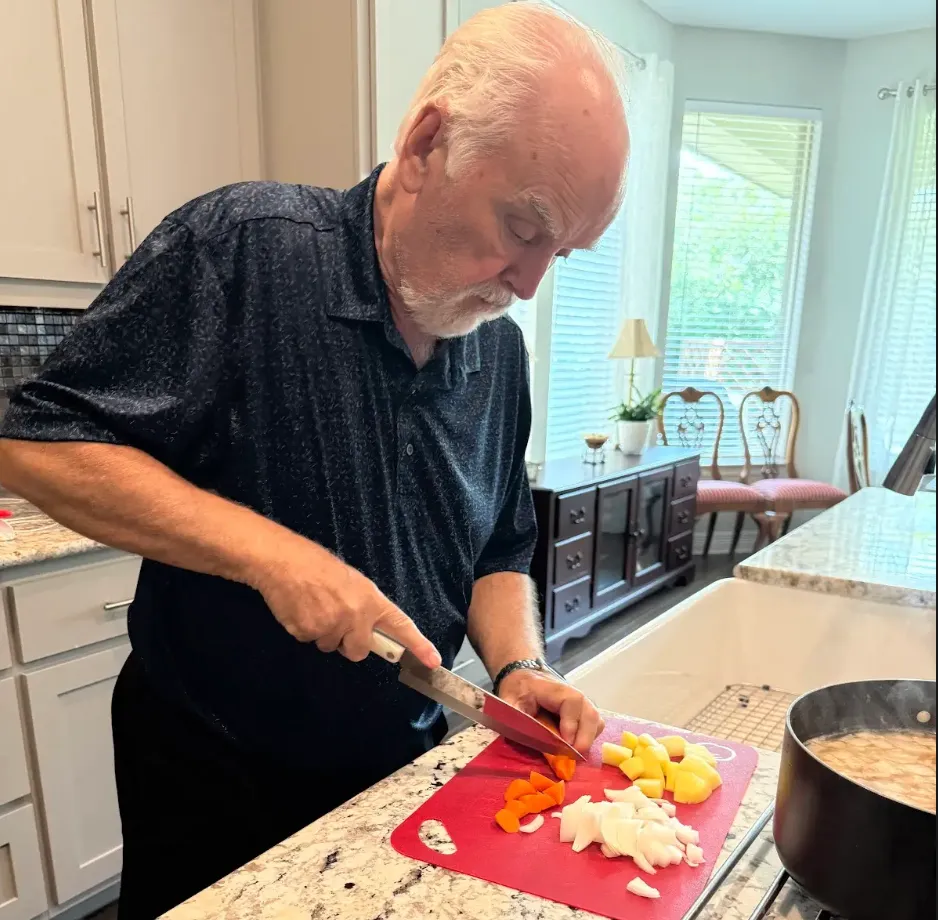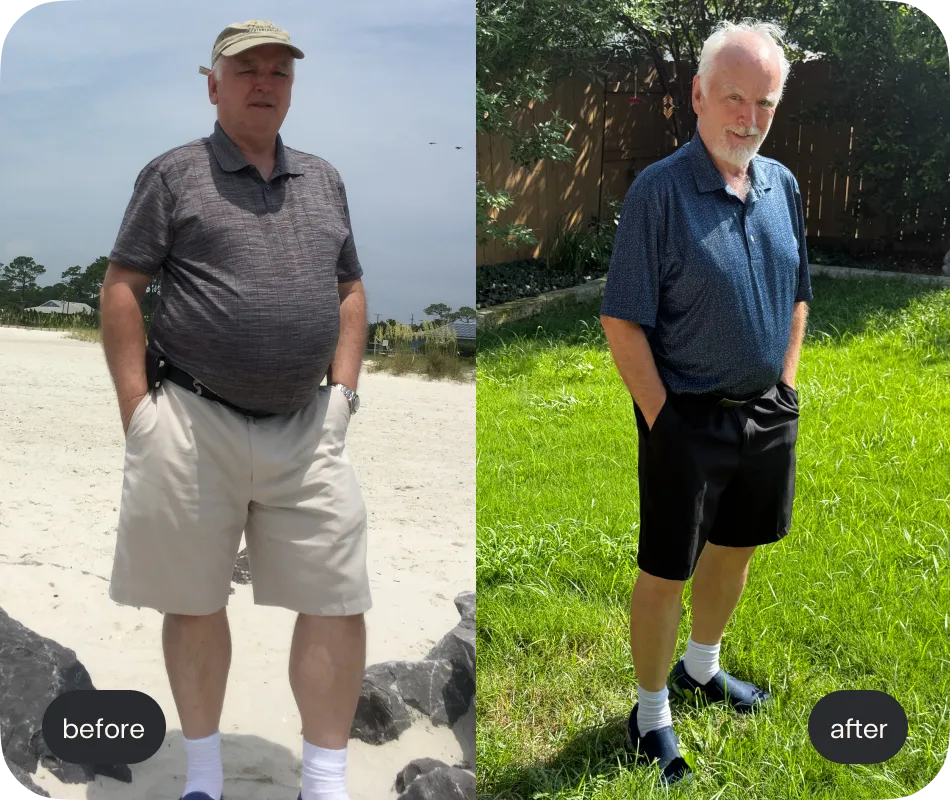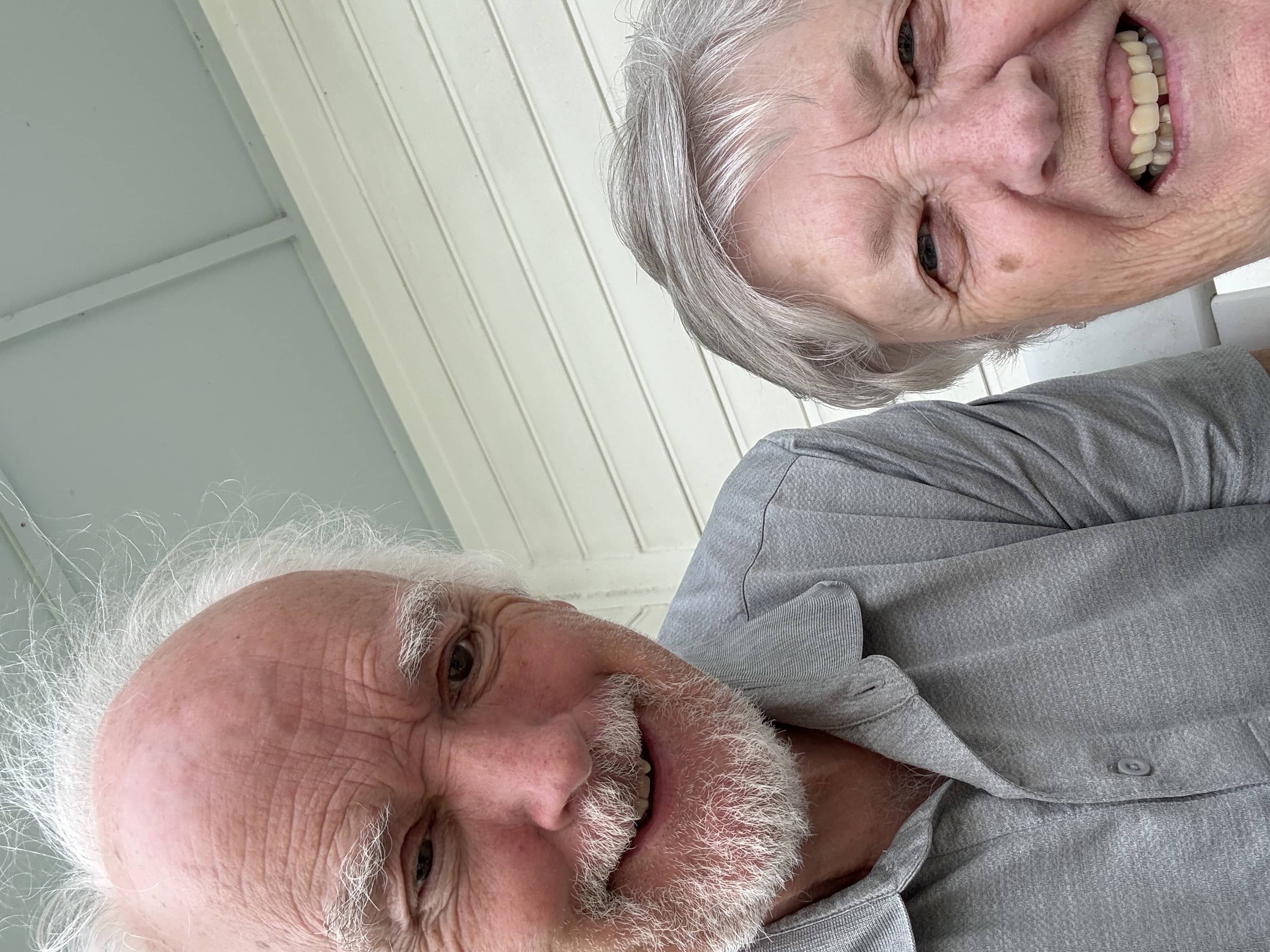
Alan turned a type 2 diabetes diagnosis into action. With lifestyle changes and Function’s insights, he improved his nutrition, exercise, and supplementation—lowering his HbA1c and weight.
The unexpected diagnosis
At 69, Alan takes pride in staying sharp. From his home in Georgetown, Texas, he runs a small business, still works 10+ hour days because he loves what he does, and starts every morning the same way—by making breakfast for his wife of nearly 50 years.
He hadn’t been to the doctor in a while, and the last time his hemoglobin A1c (HbA1c) was checked, six years earlier, he’d been flagged as prediabetic.
When he finally returned for a routine physical, his bloodwork revealed a total cholesterol over 200 mg/dL, LDL cholesterol of 130 mg/dL, and HbA1c of 8.3%. He was also living with obesity. He was diagnosed with type 2 diabetes and told he needed to start medication immediately—Ozempic for his weight, a statin for his lipids.
It felt like I was told my life was over.
Alan listened—then asked questions. Could he try changing his diet and lifestyle first? The idea was dismissed.
So his journey began—to find answers, to get to the root, and to take control of his health on his terms.

Beyond routine tests
Alan’s appointment included no conversation about stress levels, diet, or daily habits. He wasn’t a smoker or drinker. But he knew his approach to nutrition could be better, having never looked at food labels or thought much about portion control. “I was never a pizza and burger guy,” he says. “But I did like bread, potatoes, and rice.” He knew it was time to get honest with himself—and with the choices he made every day.
So he did. He dove into research to carve out a different path to care for his body—one that began with food, movement, and education.
For the next three months, he tracked everything: meals, sleep, stress. He ran at-home HbA1c tests, built spreadsheets, weighed himself weekly, and started reading food labels for the first time in his life. An avid walker before, he made it a daily priority.
And three months later, the results came: HbA1c down. Weight down. Energy up. All on his own.
But something was still missing—he could feel change happening, but wanted to understand why.
Finally finding answers
Hungry for a deeper understanding of his body, Alan came across the work of Mark Hyman, M.D. and resonated with his message of understanding how the body functions and supporting it at a foundational level.
That led him to Function. He signed up in January 2025.
“Finally it all made sense,” Alan says. Function showed him how these biomarkers impact one another. He learned how leptin impacted his appetite. He understood that cholesterol wasn’t just one number—it reflected a variety of particles, with characteristics such as size and quality that influence health in different ways.
As Alan learned more about his body, he realized:
Type 2 diabetes was not the start of the end of my life, but an important marker from which to improve my health for the better.
For Alan, joining Function wasn’t about avoiding doctors. It was about being heard, seen, and supported in asking important questions.

What changed
Alan didn’t need motivation—he needed clarity.
With a lifelong curiosity about how things work, he just wanted the information to understand what was going on in his own body. Function provided that for him.
He continued his lifestyle changes, added targeted supplements from his Function action plan, and watched the numbers shift.
His HbA1c of 8.3% in November 2024 dropped to 5.6% by February 2025. His weight dropped by 14 pounds. His walking pace increased—from 19-20 mins/mile to less than 17 mins/mile.
I just feel life’s good.

The bigger picture
Alan’s story isn’t just about numbers. It’s about refusing to settle. About seeing what’s possible when you ask the right questions and have the curiosity to seek the answers. And about the power of data—not as a diagnosis, but as an invitation for change.
His why for taking the leap and joining Function? “I don’t want to be the guy in the wheelchair when I’m 80 years old if I can avoid it. So…I’m taking control.”
Today, Alan still works full-time. He still brings his wife breakfast in bed. And he’s still learning—about supplements, metabolic health, and what his biomarkers are telling him next.
But most of all, he’s staying in the driver’s seat.
The power of ownership
Health ownership isn’t about perfection for Alan. It’s about responsibility. It’s about choosing to stay curious, to keep learning, and to take action—even when the path was new to him.
You only get one body. Treat it like it’s capable of healing—because it is.
What he’s most proud of today isn’t just the metrics that improved—it’s what those numbers represent: proof that change is possible, and the human body is far more capable than we’re often led to believe.
The one thing I want to celebrate is how incredible the human body is—just give it a chance.
If there’s one thing he hopes others take away from his journey, it’s this: ”When it comes to your health, believe it or not, there's only one person that can own that. Even your spouse can't own it…only you.”
For Alan, that ownership has made all the difference—not just in his numbers, but in his life. Today, he’s encouraging his family and friends to take control too—not out of fear, but from a place of possibility. Because once you understand your body, you have a say in where your health is headed.
- Obradovic M, Sudar-Milovanovic E, Soskic S, et al. Leptin and Obesity: Role and Clinical Implication. Frontiers in Endocrinology. 2021;12(12). doi:https://doi.org/10.3389/fendo.2021.585887
- Hernáez Á, Soria-Florido MT, Schröder H, et al. Role of HDL function and LDL atherogenicity on cardiovascular risk: A comprehensive examination. PLoS ONE. 2019;14(6). doi:https://doi.org/10.1371/journal.pone.0218533
